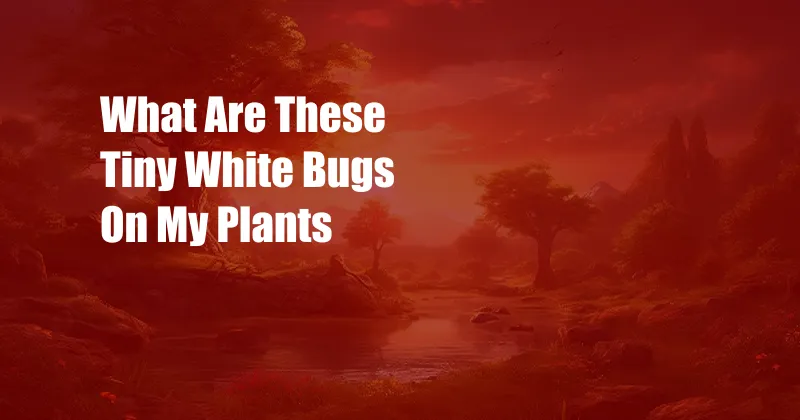
What are These Tiny White Bugs on My Plants?
As I lovingly tended to my garden, a peculiar sight caught my eye. Perched atop my prized tomato plants were minuscule white specks flitting about, leaving me wondering, “What are these tiny white bugs on my plants?” With an insatiable curiosity ignited, I embarked on a journey to uncover the identity and habits of these enigmatic creatures.
Aphids: The Tiny White Intruders
The culprits behind the white specks on my plants turned out to be aphids. These tiny, sap-sucking insects are ubiquitous garden pests that feed on a wide variety of plant species. Aphids have piercing mouthparts that they use to penetrate plant tissue and extract nutrient-rich sap.
Life Cycle and Behavior of Aphids
Aphids are remarkable insects with a fascinating life cycle. They reproduce both sexually and asexually, with the latter being the dominant mode in most cases. Aphids can produce multiple generations within a single growing season, making them prolific pests. During the asexual phase, female aphids give birth to live young, which are genetically identical to their mother.
Aphids are gregarious insects that often form dense colonies on host plants. Their feeding habits can cause substantial damage, as they drain plants of essential nutrients and transmit diseases. They also produce a sticky substance called honeydew, which attracts other pests such as ants and wasps.
Managing Aphid Infestations
Aphids can be challenging to control, but with proper management, their populations can be significantly reduced. Here are some effective strategies:
- Natural Predators: Ladybugs, lacewings, and parasitic wasps are natural predators of aphids. Encouraging the presence of these beneficial insects in your garden can help suppress aphid infestations.
- Insecticidal Soap: Insecticidal soap is a relatively safe and effective treatment option for aphids. It works by breaking down the insect’s protective outer layer, causing them to dehydrate and die.
- Horticultural Oils: Horticultural oils can also be used to control aphids. These oils smother the insects, disrupting their respiration and causing them to suffocate.
- Cultural Practices: Maintaining healthy plants and avoiding over-fertilization can make them less susceptible to aphid infestations. Removing infected plant material and keeping the garden weed-free can also help reduce aphid populations.
Frequently Asked Questions (FAQs) about White Bugs on Plants
Q: What other insects can resemble white aphids?
A: Whiteflies and mealybugs can also appear white and feed on plants. Whiteflies are tiny, flying insects that resemble tiny moths, while mealybugs are covered with a waxy, cottony substance.
Q: Are aphids harmful to humans?
A: Aphids are not typically harmful to humans, but they can transmit plant diseases to humans through their saliva.
Q: How can I prevent aphid infestations in the future?
A: To prevent future aphid infestations, inspect plants regularly for signs of insects and remove any infected plant material. Encourage natural predators in your garden, use insecticidal soap or horticultural oils as needed, and implement cultural practices such as maintaining healthy plants and avoiding over-fertilization.
Conclusion
The tiny white bugs on your plants are most likely aphids, and they have found a cozy home to feed on your precious flora. By understanding the nature and habits of these insects, you can effectively manage their populations and protect your garden. If you are passionate about gardening and eager to learn more about pests and diseases, stay tuned for future articles that will delve deeper into the fascinating world of plant health and care. Remember that a healthy garden starts with a solid understanding of its inhabitants, both good and bad.